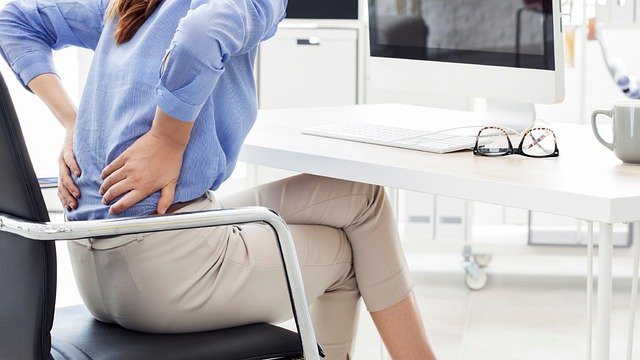Redefining Workplace Ergonomics: The Standing Workstation Revolution
The modern workplace is undergoing a subtle yet profound transformation, challenging long-held norms about office design and employee well-being. At the forefront of this change is the rise of standing workstations, a trend that's reshaping how we approach productivity, health, and workplace dynamics. This shift represents more than just a furniture upgrade; it's a reimagining of the work environment that promises to boost both employee satisfaction and bottom-line results.

The Evolution of Office Ergonomics
The concept of ergonomics in the workplace has come a long way since the industrial revolution. Initially focused on maximizing efficiency through standardized workstations, the field has gradually shifted towards prioritizing employee comfort and health. The introduction of ergonomic chairs and keyboards in the late 20th century marked a significant step forward, acknowledging the impact of workplace design on physical well-being.
However, it wasn’t until recent years that the dangers of prolonged sitting came into sharp focus. Studies linking excessive sitting to a range of health issues, from back pain to increased risk of cardiovascular disease, sparked a reevaluation of traditional office setups. This growing body of research coincided with a broader cultural shift towards health-consciousness, creating fertile ground for the standing workstation revolution.
The Science Behind Standing
The appeal of standing workstations goes beyond intuition; it’s grounded in scientific research. Studies have shown that alternating between sitting and standing can have numerous health benefits, including improved posture, reduced back pain, and increased calorie burn. Moreover, some research suggests that standing can enhance cognitive function and creativity, potentially boosting productivity.
One particularly compelling study published in the Journal of Physical Activity and Health found that standing for just three hours a day, five days a week, could burn an extra 750 calories per week. This equates to about 30,000 extra calories burned per year—or the equivalent of running ten marathons. While the primary goal of standing workstations isn’t weight loss, this data underscores the potential for significant health impacts over time.
Implementing Standing Workstations: Challenges and Solutions
Despite the potential benefits, transitioning to standing workstations isn’t without its challenges. One of the primary hurdles is the initial cost of equipment. High-quality adjustable desks can be a significant investment, especially for smaller businesses or those equipping large offices. However, many companies are finding creative solutions, such as gradually phasing in standing desks or offering them as part of wellness programs.
Another challenge is employee adaptation. After years of sitting, transitioning to standing can be physically demanding and may require an adjustment period. To address this, many organizations are implementing education programs to teach proper standing techniques and ergonomics. Additionally, the most successful implementations often involve a gradual transition, encouraging employees to alternate between sitting and standing throughout the day.
The Ripple Effect on Workplace Culture
The introduction of standing workstations often catalyzes broader changes in workplace culture. Many organizations report increased interaction and collaboration among employees, as standing naturally encourages more movement and face-to-face communication. This can lead to a more dynamic and energized work environment, fostering creativity and innovation.
Furthermore, the visible commitment to employee well-being can have a positive impact on company culture and employee satisfaction. In an era where attracting and retaining top talent is crucial, offering standing workstations can be a differentiator, signaling a progressive and employee-centric approach to workplace design.
Beyond Standing: The Future of Dynamic Workspaces
As the standing workstation trend matures, it’s paving the way for even more innovative approaches to workplace design. Some companies are experimenting with treadmill desks, allowing employees to walk at a slow pace while working. Others are creating flexible spaces that accommodate a variety of working styles, from traditional desks to standing stations to informal collaborative areas.
Looking ahead, the future of workplace ergonomics is likely to be characterized by customization and adaptability. As our understanding of the relationship between physical environment and productivity deepens, we can expect to see increasingly sophisticated solutions that cater to individual preferences and needs. This might include AI-powered workstations that learn and adapt to each user’s habits, or modular office designs that can be easily reconfigured for different tasks and team sizes.
Practical Insights for Implementing Standing Workstations
• Start with a pilot program to gauge employee interest and identify potential challenges
• Offer training sessions on proper ergonomics and the benefits of alternating between sitting and standing
• Consider cost-effective options like desk converters that can turn existing desks into standing workstations
• Implement a gradual transition, encouraging employees to stand for short periods and gradually increase over time
• Collect feedback regularly and be prepared to make adjustments based on employee experiences
• Pair the introduction of standing workstations with a broader wellness initiative to maximize engagement and benefits
In conclusion, the standing workstation revolution represents a significant shift in how we approach workplace design and employee well-being. By challenging the norm of sedentary office life, organizations are not only addressing immediate health concerns but also laying the groundwork for more dynamic, adaptable, and productive work environments. As this trend continues to evolve, it will undoubtedly play a crucial role in shaping the future of work, driving innovation in both office design and workplace culture.





